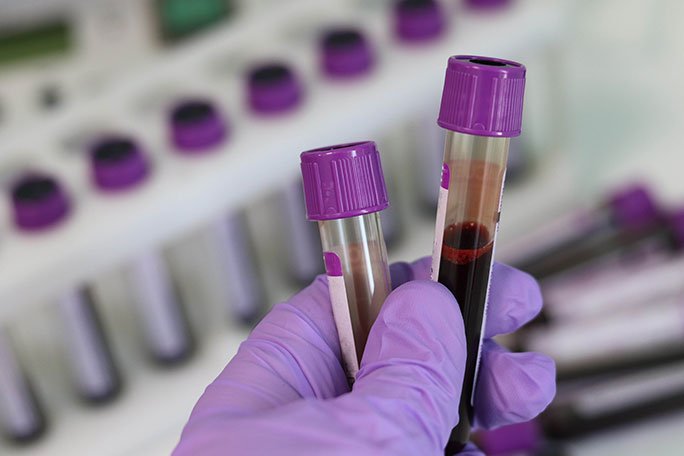Ensuring Adequate Supply of Phlebotomy Equipment in Healthcare Facilities during Pandemics
Summary
- Implementing inventory management systems
- Utilizing automated ordering systems
- Establishing strong supplier relationships
Introduction
Healthcare facilities play a crucial role in providing quality medical care to individuals, especially during pandemics when the demand for medical services increases significantly. One of the essential aspects of healthcare operations is ensuring an adequate supply and management of Phlebotomy Equipment. Phlebotomy Equipment is critical for drawing blood samples for diagnostic testing, transfusions, donations, and research purposes. In this article, we will discuss measures that healthcare facilities in the United States can implement to ensure the adequate supply and effective management of Phlebotomy Equipment during pandemics.
Implementing Inventory Management Systems
One of the key measures that healthcare facilities can take to ensure an adequate supply of Phlebotomy Equipment is implementing inventory management systems. These systems help healthcare facilities keep track of their supplies, identify shortages or excess inventory, and streamline the ordering process. By utilizing inventory management systems, healthcare facilities can:
- Track the usage of Phlebotomy Equipment: By monitoring the usage of Phlebotomy Equipment, healthcare facilities can identify trends and patterns in supply consumption. This data can help facilities forecast their future needs and plan their inventory accordingly.
- Set par levels for phlebotomy supplies: Establishing par levels for phlebotomy supplies ensures that healthcare facilities always have a minimum quantity of essential equipment on hand. When stock levels drop below the par level, the inventory management system can trigger automatic reorder notifications, preventing stockouts.
- Minimize waste and optimize inventory: Inventory management systems can track expiration dates of phlebotomy supplies and alert healthcare facilities to items that are nearing expiration. This feature helps facilities reduce waste by using supplies before they expire and optimize their inventory levels by avoiding overstocking.
Utilizing Automated Ordering Systems
Another effective measure for ensuring the adequate supply of Phlebotomy Equipment is utilizing automated ordering systems. These systems streamline the procurement process, eliminate manual errors, and ensure timely replenishment of supplies. By implementing automated ordering systems, healthcare facilities can:
- Reduce lead times for ordering: Automated ordering systems can expedite the procurement process by generating purchase orders automatically when phlebotomy supplies reach a predetermined reorder point. This reduces lead times for ordering and ensures that supplies are restocked in a timely manner.
- Improve order accuracy: Manual ordering processes are prone to errors such as duplicate orders, incorrect quantities, or missed items. Automated ordering systems eliminate these errors by generating accurate purchase orders based on predefined criteria, such as par levels and usage rates.
- Enhance Supply Chain visibility: Automated ordering systems provide healthcare facilities with real-time visibility into their Supply Chain, allowing them to track orders, monitor deliveries, and identify any potential disruptions. This visibility helps facilities proactively address Supply Chain issues and maintain continuity in their operations.
Establishing Strong Supplier Relationships
In addition to implementing inventory management and automated ordering systems, healthcare facilities can ensure the adequate supply of Phlebotomy Equipment by establishing strong relationships with their suppliers. Strong supplier relationships can benefit healthcare facilities in the following ways:
- Prioritize orders during shortages: During pandemics or other Supply Chain disruptions, having strong supplier relationships can be advantageous. Suppliers are more likely to prioritize orders from facilities with whom they have established relationships, ensuring that healthcare facilities receive their phlebotomy supplies promptly.
- Receive preferential pricing and terms: Suppliers may offer preferential pricing, discounts, or favorable payment terms to facilities that maintain long-term relationships with them. These benefits can help healthcare facilities reduce their procurement costs and improve their overall financial performance.
- Collaborate on product development and innovation: Strong supplier relationships can foster collaboration between healthcare facilities and suppliers on product development and innovation. Suppliers may seek input from facilities on product design, features, and functionality, leading to the development of tailored solutions that meet the specific needs of Healthcare Providers.
Conclusion
Ensuring an adequate supply and effective management of Phlebotomy Equipment is essential for healthcare facilities to deliver high-quality patient care, especially during pandemics. By implementing inventory management systems, utilizing automated ordering systems, and establishing strong supplier relationships, healthcare facilities in the United States can enhance their Supply Chain resilience, optimize their inventory levels, and maintain continuity in their operations. These measures not only help healthcare facilities mitigate the risks associated with supply shortages but also improve their overall efficiency and effectiveness in managing Phlebotomy Equipment.

Disclaimer: The content provided on this blog is for informational purposes only, reflecting the personal opinions and insights of the author(s) on the topics. The information provided should not be used for diagnosing or treating a health problem or disease, and those seeking personal medical advice should consult with a licensed physician. Always seek the advice of your doctor or other qualified health provider regarding a medical condition. Never disregard professional medical advice or delay in seeking it because of something you have read on this website. If you think you may have a medical emergency, call 911 or go to the nearest emergency room immediately. No physician-patient relationship is created by this web site or its use. No contributors to this web site make any representations, express or implied, with respect to the information provided herein or to its use. While we strive to share accurate and up-to-date information, we cannot guarantee the completeness, reliability, or accuracy of the content. The blog may also include links to external websites and resources for the convenience of our readers. Please note that linking to other sites does not imply endorsement of their content, practices, or services by us. Readers should use their discretion and judgment while exploring any external links and resources mentioned on this blog.
